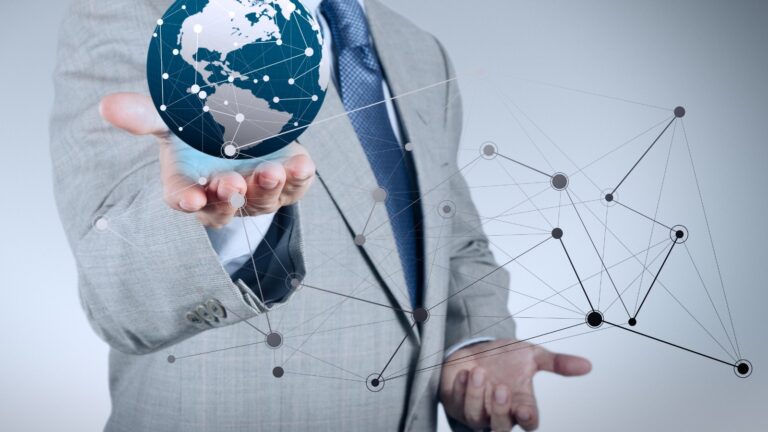The majority of digital twins being made focus on one use case. However, as digital twins are set to be adopted more in the future, there is a need to enhance interoperability between each other. Interoperability refers to ensuring digital twins can process information from heterogeneous systems. The International Standards Organisation (ISO), the Industrial Digital Twins Association (IDTA), the International Electrotechnical Commission (IEC), the International Telecommunication Union (ITU), the Institute of Electrical and Electronics Engineers (IEEE) and the Digital Twins Consortium (DTC) are some of the leading organisations that have established standards that promote interoperability.
Adhering to such standards ensures intra-operability and inter-operability of products and services produced. It is of the utmost importance that such standards are upheld where digital twins are commercialised in every stage of digital twin production, be it in the process development, manufacturing of goods or delivery of services. Doing so ensures a standard for usability and predictability and guarantees safety for all parties involved. This article will provide an overview of the types of international standards a digital twin engineer needs to be mindful of when creating a digital twin solution.
ISO 23247

ISO is a worldwide federation consisting of representatives from national standard organisations. ISO has several technical committees and working groups that work on setting standards for digital twins. This includes the automation systems and integration technical committee 184, which developed the first digital twin project. They mainly focused on standardising digital twin for intelligent manufacturing and industrial data and systems. Another important working group is ISO/IEC JTC/ 1/SC 41/WG6, which has formed standardisation in digital twin concepts, terminology, use cases and related technologies.
One of the critical documents ISO has worked on includes the 23247 series. It is a framework that considers standards in “manufacturing elements including personnel, equipment, materials, manufacturing processes, facilities, environment, products, and supporting documents”. Its standards can be divided into four groups. This includes general principles and requirements for developing digital twin manufacturing (ISO 23247-1), reference architecture with functional views (ISO 23247-2), a list of essential information attributes for the observable manufacturing elements (ISO 23247-3) and technical requirements for information exchange between entities within the reference architecture. This kind of standardisation requirement would depend on the type of digital twin model being developed, according to the different technologies being used.

IEC - Digital Twin with IoT/IIoT Capabilities

IEC centres on forming standards in the electrotechnology field. The Asset Administration Shell (ASS), known as IEC/TC65/2G24, an implementation method of the digital twin in smart manufacturing, is one example of the type of guideline documents made on the digital twin. In standardising the Internet of Things (IoT), Industrial IoT (IIoT) and digital twin, IEC collaborated with ISO to create the working/technical committee named ISO/IEC JTC 1/SC 41. As the name suggests, this includes a range of requirements that developers must meet to create applications that merge IoT and digital twins. The group has standardised many things in this respect. This includes guideline documents for IoT and digital twin use cases (PWI JTC1-SC41-6), behavioural and policy interoperability (PWI JTC1-SC41-8), cultural heritage management (PWI TR JTC1-SC41-9/PWI TR JTCI-SC41-10), device discovery method of interoperability (PNW JTC1 -S41-320 ED1) and more.
The IEC is currently considering the implementation of SEG 12, which refers to a set of standardisations related to different areas of bio-digital convergence covering everything from biomaterials to human augmentation. This team will ideally collaborate with working group 6 of ISO, which already focuses on bio-digital standardisation opportunities relating to environmental systems of systems.
ITU - Digital Twin Network

ITU is a United Nations specialised agency among 193 member states focusing on information and communication technologies. It is an intergovernmental body coordinating the shared global use of radio spectrum, satellite orbits and other communications infrastructures worldwide. In other words, it is a body that sets standards to foster the seamless interconnection of various communication systems.
In terms of its relationship with a digital twin, Y.3090 refers to a standardisation document introduced in 2022 related to digital twin networks. It specifically focuses on providing a framework for the requirements and architecture of a digital twin network. It considers DTN’s functional and service requirements in addition to its architecture and security concerns. It also considered the different modes of data collection tools and methods and the characteristics of data that such digital twin systems must be compatible with. A more recent initiative that is set to be created in 2023 concerns the formation of building technical standards for the metaverse. A working group called the ITU-T focus was established at a conference last year on December 16. Among the many frameworks it will establish, it will consider the technical requirement for metaverse to identify fundamental enabling technologies in the areas of the digital twin.
IEEE - 1451

IEEE is the largest technical professional organisation that develops technology for the benefit of humanity. IEEE is another standardisation body that introduces many frameworks among its many roles. IEEE 1451 refers to standardising two interfaces, a transducer device interface and a transducer network interface. In considering this relationship with the digital twin, the semantic communication layer connects transducer devices to the digital representations to achieve a semantic level of interoperability. This enhances the communication layer as semantics is added to the communication process, thereby allowing the development of an interoperable DT based on IEEE 1451 standards. This will enable data from the physical sensor to be acquired and sent in real-time to its digital representation, thereby strengthening the two-way communication required for the digital twin to monitor and visualise data.
Additionally, the P3144 is the IEEE standard for digital twin maturity models. This standard sets the definition and meaning for the digital twin maturity model and concerns subjects related to digital twin capability domains, corresponding subdomains, and assessment methodologies such as assessment content, assessment process and assessment maturity level. A more recent project includes the X73 standard, a merge of ISO and IEEE. Commonly termed ISO/IEEE 11073, this refers to a set of standards that were influenced to facilitate communication between personal health devices and managers.
DTC: The Making of a Digital Twin System Interoperability Framework

DTC refers to one of the main organisations that exclusively look at digital twins. Its central aim is to drive awareness, adoption, interoperability and development of digital twin technology. The DTC recently introduced a Digital Twin System Interoperability Framework. One of the key objectives of introducing such a system is to help unify a “nascent ecosystem of high-value, multi-vendor services that can seamlessly plug into a multi-dimensional, interoperable system of system. It is based on seven concepts which include:
- System-Centric Design
- Model-Based Approach
- Holistic information Flow
- State-Based Interactions
- Federated Repositories
- Actionable Information
- Scalable Mechanisms
The long-term objective is to create a framework enabling USB-type compatibility and ease for all systems connected to the internet and private networks. In other words, the consortium hopes to find a way to design digital twin systems using a common framework and interoperate just like a USB device. It should be noted that this is a relatively new initiative and is still being perfected. Hence, there is no imperative need to follow the standardisations or criteria set out in the documents the way ISO, IEEE or IEC requires.
Cerexio Digital Twin: One Solution for All Industrial Domains

Cerexio Digital Twin is an advanced technology solution suite that houses industry 4.0 technology, including IoT, AI, ML, predictive analytics and more. As one of the leading technology vendors to house such a powerful solution, Cerexio meets many standardised requirements. It is a user-friendly solution that can facilitate all industries despite their unique visualisation requirements. This makes it a solution compatible with many model assets in different industrial domains, including manufacturing, utility, oil and gas, telecommunications, building and construction, logistics and more.
Connect with us to learn what features are included in this solution.
This article is prepared by Cerexio, a leading technology vendor that offers specialised solutions in the Advanced Manufacturing Technology Sector. The company is headquartered in Singapore and has offices even in Australia. Cerexio consists of a team of experts that have years of experience and holds detailed knowledge on a range of subject matters centric to the latest technologies offered in manufacturing and warehouse operations, as well as in predictive maintenance, digital twin, PLC & instrumentation setup, enterprise integrator, data analytics and total investment system.
